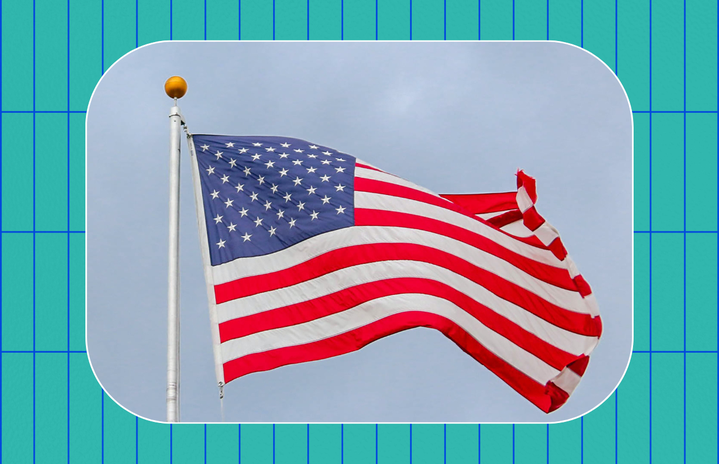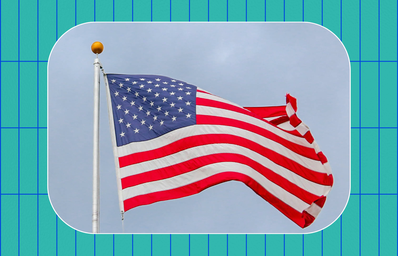Like many Americans today, the myth of the “great melting pot” stands enormous and foreboding between my life and my family’s culture.
The goal of general assimilation of European immigrants in the United States–albeit infinitely less harmful than the exclusion of some non-white immigrant groups–created a more cohesive national culture for United States inhabitants. But, it separated countless people, like me, from their heritage, mother language, and culture.
I am Norwegian, but I do not speak Norwegian. I have the fair skin and the reddish hair (my brother sports the blonde), but I have been to Norway only once.
I eat lefse, a traditional potato flatbread, during the holidays–although I draw the line at lutefisk, dried whitefish which I personally think my ancestors should’ve left on those big boats they boarded to cross the Atlantic. But I don’t know much more about my ancestry than that.
I decided to interview my grandma Janet to learn more about my own history. My great-great grandmother immigrated to the United States from Norway but that’s all I knew, and that wasn’t right.
I learned, for the first time, about three generations of women before me. Not only did it break my heart to have not known their stories yet, but I also mourned these women for the first time, despite two of them having passed away years, if not decades, ago.
Instead of assembling their life’s statistics and resumes, I want to recount and immortalize the little details my grandmother gifted to me. These details make them who they are, but they also make me who I am. This article is not chronological, and it is a bit of a mess–but my ancestors were not linear women. Neither were their lives, constantly changing, linked with others, linked with mine.
These are their stories.
Kirsten Knudsen
My great-great-grandmother Kirsten (yes, like the American Girl Doll) came to the United States in the early 1900s with one goal: to make money.
My grandmother called her a businesswoman at heart. Unwed in her late 20s, her immigration was a rare situation. Most Norwegians who immigrated to her homesteading area of North Dakota were farmers, but she was a city girl from Oslo who enjoyed singing and theater.
She was planning on returning to Norway but instead fell in love with and married Thorlief Moller, my great-great-grandfather.
Kirsten was described as funny and entertaining. My own grandmother can remember her laughing, and she would act out plays she had been in her childhood in Norway for her children while they survived the Great Depression and Dust Bowl on the Great Plains.
Now I know that Norwegian women can find bright sides of situations that could render an entire nation hopeless.
Kirsten was a mother to her four children through and through. She made dresses of feed sacks and boiled clothing to make sure her children had clean clothes.
Her fifth child, Sigurd, died of appendicitis when he was 3 years old. Kirsten hitched a ride on the mail carrier horse and buggy from the homestead and traveled over 70 miles to get her son help, not knowing what was wrong with him other than a worsening stomach ache.
My grandmother says Sigurd’s death affected the whole family harshly. His memorial still rests at the North Dakota homestead. I have my own little brother and I know his bright eyes, blonde hair, and quiet demeanor probably bears some resemblance to Sigurd. I’ve thought about this little boy every day since I came to know of his existence. He must have been so scared. Kirsten must have been so scared.
Kirsten used to sit on the steps of her homestead in North Dakota, eyes scanning the hills for some semblance of Norway and its towering fjords and rolling hillscapes. I am no geneticist, but I do not think it is a coincidence that I love the landscapes of Colorado, knowing somehow they’re just as welcoming and familiar.
Kirsten Knudsen died when my grandmother was in high school. She was a pioneer woman, a businesswoman, a mother, and an entertainer. I never got to meet her, but had she not stepped on a ship alone to come to the United States, I would not have existed.
Helen Monson
My great-grandmother Helen was born in 1917, Kirsten’s second child.
I did get to meet my great-grandmother a couple of times. I remember her as stoic and quiet, but always happy to see us. She made me a yellow pillow once–I do not know where it is anymore, but it was homemade and soft and bright.
Helen was smart. She loved North Dakota and farming with her father. She was a comptometer (early calculator) operator, and could add numbers easily in her head. She only spoke Norwegian until she went to school, where she had to learn English in addition to math, geography, and history. As an excellent typist, she worked seasonally, although her husband, Gerald Monson, wanted her to stay home and with her children.
It’s easy to forget how far feminism has come when you’re so separated from the women before you who didn’t have the same liberties you do today.
Helen was not glamorous, nor necessarily the “cuddly mother” archetype to my grandmother, but she was there. She would make her four children practice their instruments daily. She would do my grandmother’s hair every Sunday for church–a devout Christian. She made their budget work, she had after-school snacks ready every day and she kept the house clean. She taught my grandma to hang clothes on the line without showing her wet underwear. She was not the best cook, but food was always on the table.
She loved Thanksgiving, a trait that shows still in my own grandmother and in the decorations she whisks over to our house every November: candles on the table atop a cloth tablecloth, the whole family sitting around the table. Multiple entrées while swapping stories with family. Knowing my nuclear family, Thanksgiving would be takeout on the couch if it weren’t for Helen. But I’m glad it isn’t.
Now I know Norwegian women will be there for their families. I knew this already, but I feel so lucky to come from a line of consistent and supportive mothers. As a career-oriented woman in her early 20s, I don’t see motherhood on the near horizon for me, but if that is a path I choose, I know I am coming from a line of good, strong mothers.
Helen was a lonely woman. She told her daughters that she wasted her 20s on an alcoholic boyfriend, and when she married my great-grandfather, the relationship was argumentative and could be volatile. She never wanted help in the kitchen–that was her “relaxing” time. But she could always be counted on.
When my great-grandfather was ill with Alzheimer’s, he went and picked a bunch of wildflowers for Helen and put them into a bouquet. Helen was so pleased, she told her daughters the wildflowers “made all of the years worth it”.
Now I know Norwegian women, like myself, can be a bit of hopeless romantics.
My grandmother remembers “getting the giggles” in the kitchen with her mother and sisters so badly that they were crying. As the daughter of a Norwegian mother who was, also, always there, ever consistent, ever-present, and died four years ago, I know these moments are more valuable than 10,000 pounds of lefse. There’s my heritage. There’s my culture.
Now I know that Norwegian women can quiet parts of themselves to push their children towards happiness. I don’t know if this is a good thing.
Helen died in 2016. She was 99 years old. But she lives on in our Thanksgivings.
Janet Andersen
What is there to say about my grandmother?
When she was describing her own mother, Helen, as “always there,” I realized I could say the same thing about her.
When my brother was being born, I stayed at her and my grandpa’s house. She was at countless games, band concerts, and holidays. She sends me letters all of the time now: magazine snippets, inspirational quotes, and sometimes my own artwork I made as a child that she had saved all these years. My apartment’s refrigerator is covered in things she sends me: a picture of my dad and a beer when he was my age. A handwritten letter encouraging me to accept my path, as I walk down it. Snarky cartoon quotes.
Janet was born in 1945, with her father stationed in the Philippines for the first 11 months of her life. But, once her father returned, she was a “daddy’s girl”–Helen and Janet’s sister Carolyn were very close, and Janet “didn’t like sharing”.
If you’ve met my grandmother, you would be shocked to know she describes herself as shy. That woman can talk. She has the biggest talent for making people feel welcome and open up that I have ever seen. Whether it is a waiter at a restaurant, someone sitting next to her while she’s watching her grandson’s soccer game, or just someone on the street, Janet can and will find a way to relate to them and make them feel special. But she told me below that demeanor, she likes her alone time, and has struggled with friendships–for the first three days of college, she stayed hidden in her dorm.
She fell in love with my grandfather, David, in college. When they moved to Stanford for David’s education, Janet realized she was just as smart as the students there and saw herself getting a Ph.D. for the first time.
And get a Ph.D., she did–a nontraditional degree combining philosophy and art, mind and creativity. She hosts art sales to this day and sends us her drawings over text and in letters.
She had my dad, Aaron, in 1974 when she was 28. She wanted more children, but struggled with this–and so she considers my dad a huge blessing.
My dad says Janet treated him like “an adult, even when I was little,” during his childhood. He continued that Janet always wanted to know how his day was, always came to all of his events, and let him make his own mistakes.
They visited art galleries frequently and she still comments on how good of an artist he could have been. Picture that–my father, a doctor, being told he could have been a great artist. Not conventional, to say the least.
Now I know that Norwegian women draw their own paths, and want those they love to do the same.
Janet says she loved being a mom. I know that she still is one. She watches my dad’s dogs when he is out of town. She was there when his wife died. She hosted his children last Christmas when he had to work late. She nags him about throwing out food too early–which must be a direct descendant of her mother Helen, and her mother’s mother Kirsten, living poor on the Great Plains. My dad is lucky to have her still here.
This yogurt is fine, just scrape the mold off of the top!
No, Mom, it’s moldy. Take it if you want it, I’m not eating that.
Maybe I will.
I know that when Norwegian women think they’re right, they will let you know; anyone who’s been in a room with my sister, my grandmother, any of my aunts, my mother, or myself will tell you that easily. It’s no surprise the men in my family have always been much quieter–a family trait that’s been consistent since Kirsten gave birth to her first daughter.
I’m not here writing this article to tell you that Norwegian women are perfect. None of the women I mentioned here are. They have their faults, as we all do. But they’re there for their families. They’re strong. They can be funny, solemn, or some mix of in-betweenness that their daughters will spend a lifetime trying to decipher.
And I am so grateful that, although I aimed to write an article about Norwegian customs and culture, I came out with a stronger sense of self and support from the women to whom I owe my life.
Now I know that I am a Norwegian woman.



